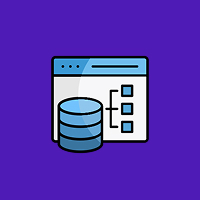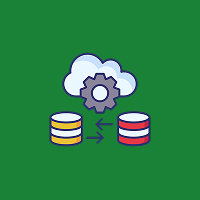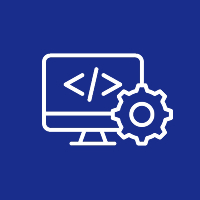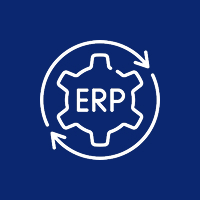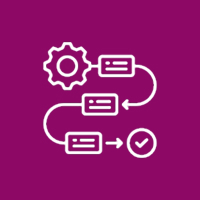Managing memory (Android Memory Management) effectively is an important consideration when developing Android applications. No matter how lightweight or complex your app may be, memory inefficient can result in app crashes, sluggish performance, and memory leaks – all of which interfere with a positive user experience. Given the wide range of Android devices you have to consider – from budget models with limited resources to high-end models – ensuring that your app is optimizing memory usage is crucial for all your users to have a smooth and responsive experience.
Below we provide you with important points and best practices to consider to help you manage memory and performance for your Android app on any device.
1. Understand The Android Memory Model
Android applications run on Android Runtime (ART), which includes automatic memory management via garbage collection (GC). GC automatically reclaims unused memory, but it also can result in pauses or sluggish performance if your app is creating too many memory allocations and is also having memory leaks.
Our Tip: Monitor garbage collection events with Logcat and Memory Profiler in Android Studio. Frequent or long GC events may indicate poor memory usage or leaks.
2. Prevent Memory leaks
Memory leaks are when you reference objects that you no longer need somewhere in your app, keeping them from being garbage collected. Over time, these referenced objects accumulate in memory usage and can result in app crashes.
Common areas of leaks are:
- Static references to Context or View objects.
- Long lived background threads or handlers that reference UI components.
- Neglecting to unregister listeners, observers or broadcast receivers.
- Reference to enclosing classes in non-static inner classes (mostly Activities and Fragments).
To prevent leaks, you should:
- Use WeakReference or SoftReference to objects that should not keep them from being garbage collected.
- Make sure you always unregister listeners and receivers in lifecycle callbacks such as onStop() or onDestroy().
- Always avoid non-static inner classes in Activities and Fragments, or at least if you make them static keep a weak reference to the outer class.
3. Use Context
The Context object is powerful but can lead to huge memory issues when mishandled.
- The ApplicationContext should be used when you need a Context object to live outside of any UI or lifecycle. For instance, you can use it to start a service, or access certain system properties.
- The Activity context always should only be used for UI operations such as inflating views or showing dialogs.
Using the wrong context type often leads to memory leaks, especially when long-lived objects hold references to short-lived UI contexts.
4. Minimize Bitmap and Image Usage
Bitmaps and Bitmaps are one of the largest memory consumers in Android apps.
Optimization strategies:
- Use BitmapFactory.Options.inSampleSize to load a smaller version of the image rather than full resolution bitmaps.
- Use VectorDrawables rather than bitmap images wherever possible: vector graphics offer better memory usage and will scale without loss of quality.
- Reuse bitmap memory using the inBitmap option on Android 3.0+.
- Explicitly release bitmap references by setting an ImageView’s drawable to null, for example in your lifecycle methods, onStop() or onDestroy().
5. Monitor Memory Usage in Context
Monitoring memory regularly allows you to identify and address leaks and inefficiencies early before they become problems.
- Memory Profiler (Android Studio): shows you a summary of overall memory allocations, garbage collection activity, allocated objects, and retained objects.
- Heap Dumps: show you detailed memory usage snapshots that when analyzed can help identify the suspicious retained references.
- LeakCanary: a popular open-source library that automatically detects memory leaks while the app is in development, or debug builds.
6. Handle Background Work Correctly
Background work is often the root cause of leaks and performance problems if the work is not done appropriately.
Best Practices:
- Cancel or dispose of threads, handlers, and async tasks in lifecycle callbacks like onPause() or onDestroy().
- Use lifecycle-aware components or Jetpack’s WorkManager and CoroutineScopes which manage the lifecycle of long-running and periodic tasks.
7. Use Lifecycle-Aware Components
Jetpack libraries contain lifecycle-aware components which significantly reduce memory leaks and allow for better use of resources.
- ViewModel: Survives configuration changes – holds UI-related data which means it can often reduce the amount of time needed to reload data unnecessarily.
- LiveData: Only updates the active lifecycle owners. When the UI or component is destroyed or inactive, it does not continue to update.
- LifecycleOwner: Allows you to handle cleanup and initialization based on lifecycle – keeps you from creating leaks due to unmet references.
8. Do Some Memory Testing
Memory testing should be integrated into your development and release process.
- Test some performance on low, mid, and high-end devices.
- Test in production scenarios and environments using StrictMode to catch accidental disk or network access on the UI thread, and detects leaked closable objects.
- Add LeakCanary to your QA builds so that you can detect leaks as your app grows.
Conclusion
Good memory management is essential for developing fast, stable, and user-friendly Android applications. By understanding Android’s memory model, avoiding normal memory problems like memory leaks, reducing images, using lifecycle-aware components, and utilizing real-time monitoring, you will put yourself in a position to improve your application’s performance and reliability.
If you require professional help with optimizing Android applications, performance tuning, or custom mobile development, E Edge Technology provides full-service Android development. Our team focuses on building scalable and memory-sensitive applications that deliver a great experience across the Android ecosystem!
Contact Us Today













 Database Development
Database Development








